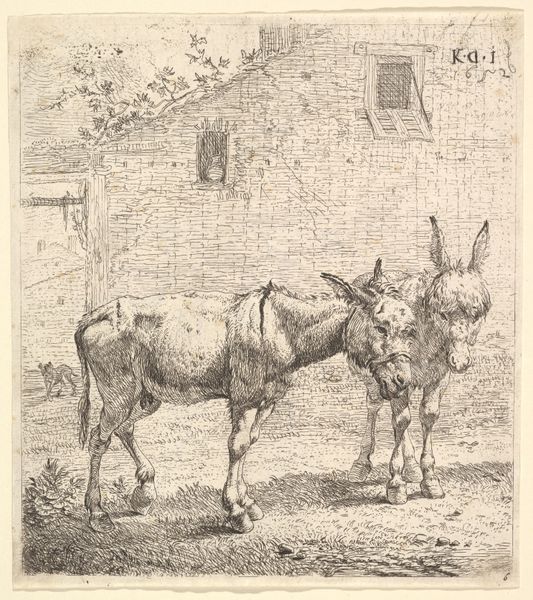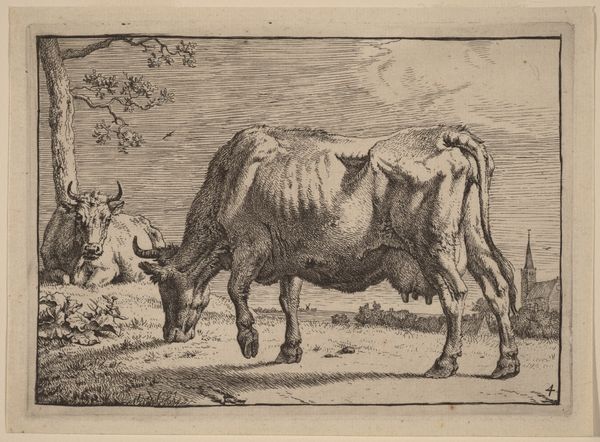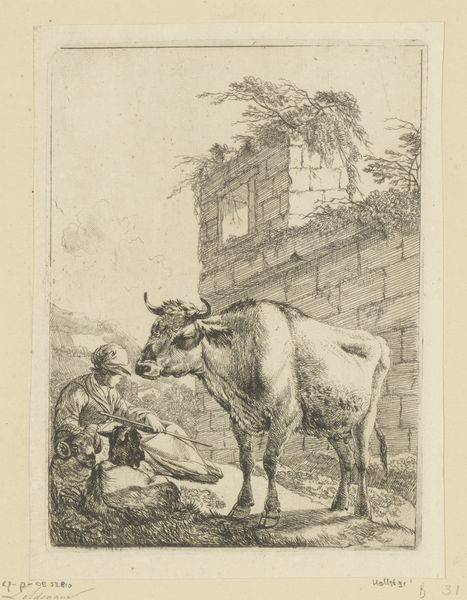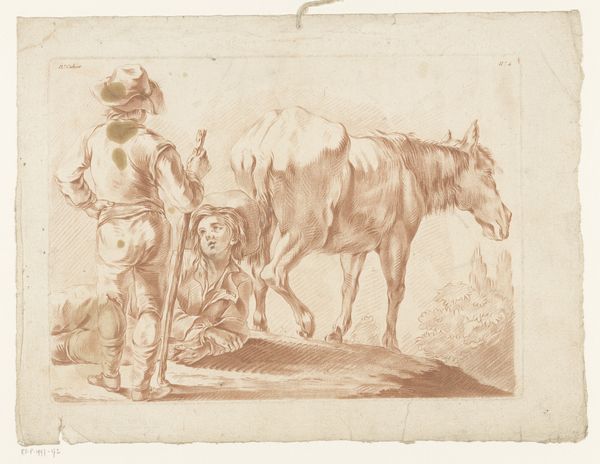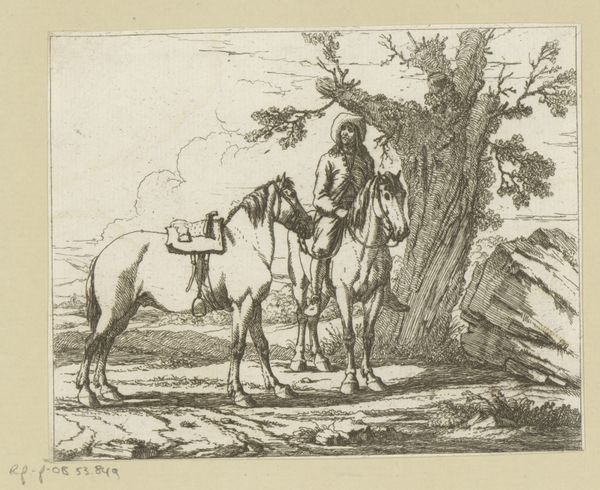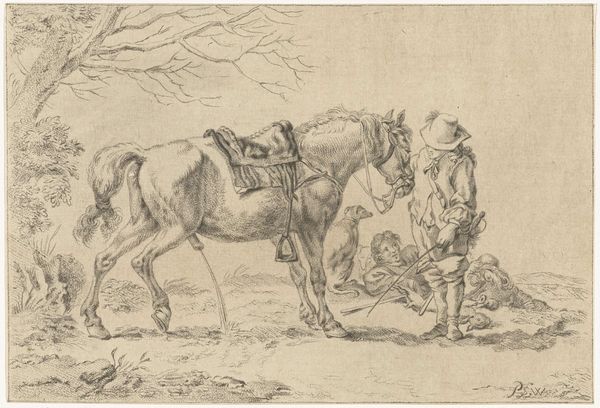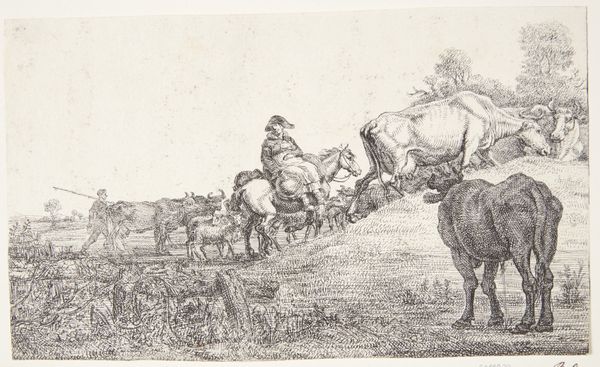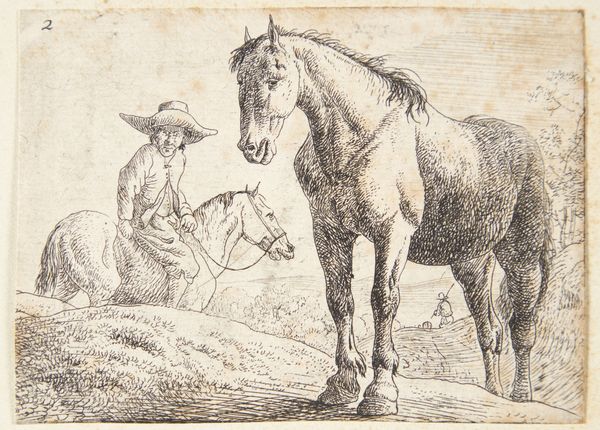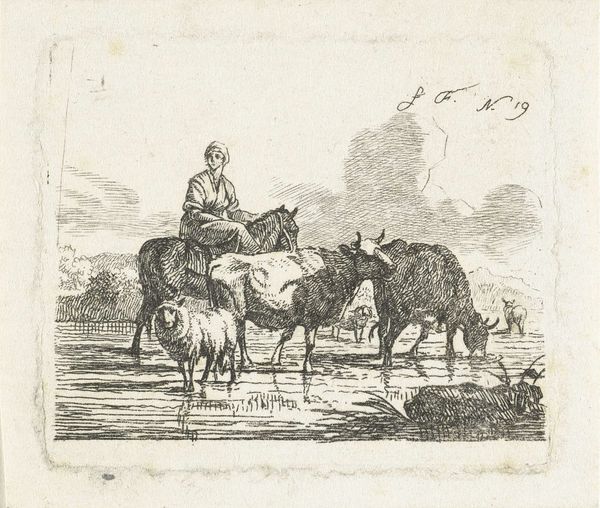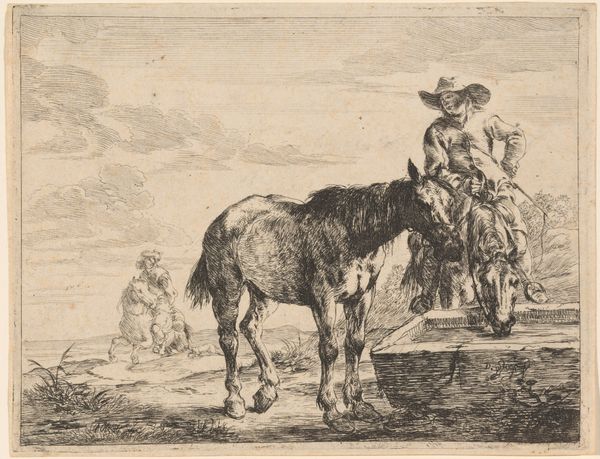
drawing, red-chalk, paper, pencil
#
drawing
#
netherlandish
#
toned paper
#
baroque
#
red-chalk
#
pencil sketch
#
landscape
#
figuration
#
paper
#
pencil
#
15_18th-century
#
14_17th-century
Copyright: Public Domain
This drawing, made by Paulus Constantijn la Fargue, features two donkeys and their driver rendered in delicate sanguine lines. At first glance, it is merely a pastoral scene. But let us consider the animal at its heart. Across cultures, the donkey bears a heavy symbolic load. In Christian iconography, it is the humble beast that carried Mary to Bethlehem and Christ into Jerusalem—a symbol of peace and service. But in other contexts, it represents stubbornness or foolishness. Think of Apuleius’ "The Golden Ass," where a man's transformation into a donkey leads him through a journey of trials and self-discovery. Or consider the comedic figure of Bottom in Shakespeare’s "A Midsummer Night’s Dream," whose ass’s head makes him an object of ridicule and desire. This duality—humility and absurdity—resonates deeply within the collective unconscious. The donkey, then, is a mirror reflecting our own conflicted nature. We see in it both the burden of our earthly existence and the potential for transcendence. This image speaks to the cyclical nature of symbols, their ability to carry contradictory meanings, and their enduring power to provoke thought and emotion.
Comments
No comments
Be the first to comment and join the conversation on the ultimate creative platform.
